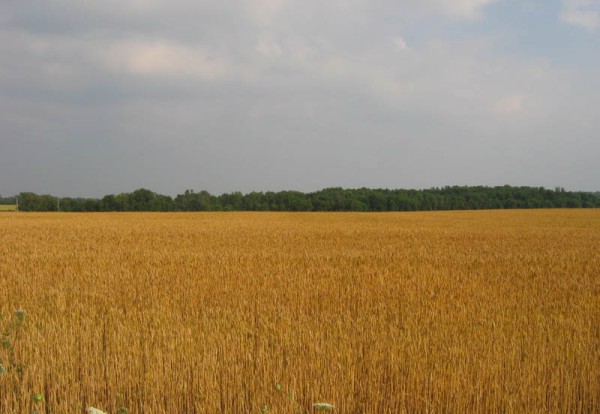Strawhenge is a conceptual installation of large straw bales constructed to celebrate the relationship between the momentary and the monumental. At slightly less than 4/5ths the scale of Stonehenge, it will stand as a replication of that mysterious structure in England, as it appears today. The large upright Sarsens and 9 lintel stones are made from 4x4x8, 800 lb straw bales, lifted into position by farm equipment and set carefully in the same north/south orientation as that of Stonehenge.
The idea of Strawhenge was first conceived by John Shaw-Rimmington, conceptual artist and president of the DSWAC as a way of accentuating the sense of the monumental, incurred when looking over a field of large bales in a field. "It is compelling," he says "to imagine that these large objects, dotted all over the landscape, are not just dropped haphazardly behind baler machines, but rather, they have been carefully moved into position to conform to some greater planetary design." He goes on to point out that, a universal and intriguing sense of purpose and meaning lies in each one of us, and is needing to be awakened. Strawhenge is a whimsical structure that allows the onlooker to yield to this tendency to see a field of large bales as something of a phenomena. The common is allowed to seem unusual. The familiar rural landscape becomes infused with newness and significance again. The relationship of the temporary, as represented by the straw, and the permanent, as implied by the 'stone-likeness' of the large standing bales, creates a powerful contrast. The "standing bale" configuration helps create that timeless attraction that other ancient structures of stone evoke, but with the added emphasis of the transitory. Like a kind of giant sandcastle, or ice sculpture, Strawhenge invites us to be children again, seeing reality on a different scale and in a different time frame.

An artist's concept
of what it will look like.
It is interesting to take the Strawhenge/Stonehenge association further. Straw and stone though very different in their durability, have many compelling things in common. They are both natural, non-toxic, non-edible, in a sense harmless materials, available in quantity to be put to a variety of worthwhile uses. In the case of straw for instance, straw bales are now being used in many areas, as an alternative building material in the construction of modern efficient ecological houses. Stone too is starting to be used again as a 'structural' material and not just as a decorative veneer, glued to the sides of buildings. The art of dry stone walling is being practised by enthusiasts, eager to learn how to build attractive natural stone walls without any mortar, as an alternative to modern landscaping features which rely heavily on manmade products and create a very plastic effect. It could be said that stone and straw are experiencing a bit of a resurgence. They are not only rudimentary substances that belong to an antiquated past, they are materials of the future.

You will be able to see Strawhenge near Port Hope Ontario, sometime in late August, if you take the Welcome exit (county road 2) off the 401 and drive north to Dale road and then drive east about a quarter of a mile (just before you get to Choate road) and then look south . The field right now is planted in wheat and should be harvested by mid August. The straw that is left on the ground will be baled and moved into the configuration of Stonehenge for all to visit and enjoy hopefully until Sept 21st, the autumn equinox.

This project is in conjunction with other demonstrations and events co-ordinated by the Dry Stone Wall Association of Canada to accommodate the resurgence of interest in dry stone walling and the structural use of stone here in Canada. You can contact us by email at john@dswac.ca. Check back to this site for future updates and pictures as the Strawhenge event unfolds.